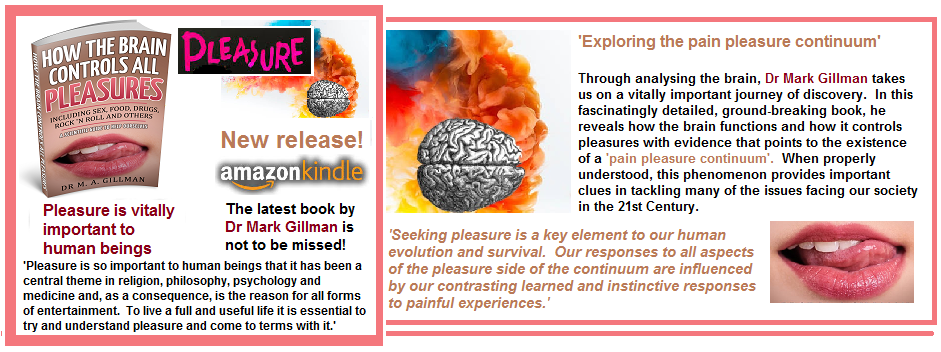Click here to get your copy of the latest book by Dr Mark Gillman!
https://www.amazon.com/dp/B07B21J7JW
Pleasure of love and sex – ‘Literature, art and music are steeped in descriptions of love and sex’
Literature, art and music, both classical and modern, are all steeped in descriptions of love and sex. History and literature are replete with the stories of great loves that ended in tragedy; Helen of Troy, Abelard and Heloise, Anthony and Cleopatra, Anna Karenina, Madam Bovary and Romeo and Juliet, to name a few.
Most classical operas and pop songs have love and/or sex as central themes. As we saw not long ago, love and sex even reach into the realm of politics, when Bill Clinton’s affair almost led to impeachment. Men and women think about sex often; on average, men think about it 34.2 times per day and women 18.6 times; again showing the central role of lust and sex in our lives. So, although men think about it more often, women also have regular sexual thoughts each day; which should not be that unexpected; since it takes two to tango.
Without sex and love many species would be extinct
The gigantic forces generated by love and sex hint at their evolutionary significance. Certainly, without sex and love, many species, including our own, would be extinct. Even though in today’s Western society, sex often occurs without love, yet many still fall in love before having sex. In most ordered societies and cultures, love does precede sex, although not always, such as in arranged marriages. For want of a better guide, for once, I am going to toe a conservative and traditionalist line and start the chapter with a consideration of love.
Love
The development of advanced human imaging techniques over the last twenty or so years has meant that we have begun to get a handle on the brain processes involved in romantic love. These findings have been supplemented by animal studies, which have also helped us to develop greater insights into how love occurs. As always, given the variations across different species, results from animal experiments should be carefully interpreted since they may not apply to man.
Human love – a complex psychological process
Of course, the applicability of animal research to people is even more fraught due to the fact that human love is such a complex psychological process. Nonetheless, we have learned a great deal from animal experiments. However, one thing is certain, romantic love is closely related to pleasure.
Love and evolution
Romantic love seems to have evolved from the courtship rituals of animals. Indeed, Helen Fisher has listed a number of universal and characteristic ploys which men and women use when they engage in flirting. These range from certain forms of body language, to gazes, smiling, grooming, and the use of music and food, as exemplified in the Western ‘dinner date.’ Darwin noted that many animals display courting behaviour and that the male usually makes the first move, while the female is more passive and waits to be courted. While there are exceptions, men also tend to initiate the human courting ritual.
Courtship often ends in romantic love, adult attachment and pair-bonding. Even though it does occur, pair-bonding is rare in the animal kingdom. It probably arose when our primitive ancestors moved from the forests, became bipedal, and lived in the savannahs.
Here, resources were more scarce and predators abundant. It therefore made evolutionary sense for a male to have a single partner so that he could adequately protect and provide for the female and her young. By doing so, he could better guarantee the survival of his genes. Similarly, females benefitted from having a protector and provider for themselves and their offspring, thereby helping to ensure that their genes were also passed on. While the partners stayed together the male could also help raise the young. Thus pair-bonding in primitive man made evolutionary sense for both the male and female.

